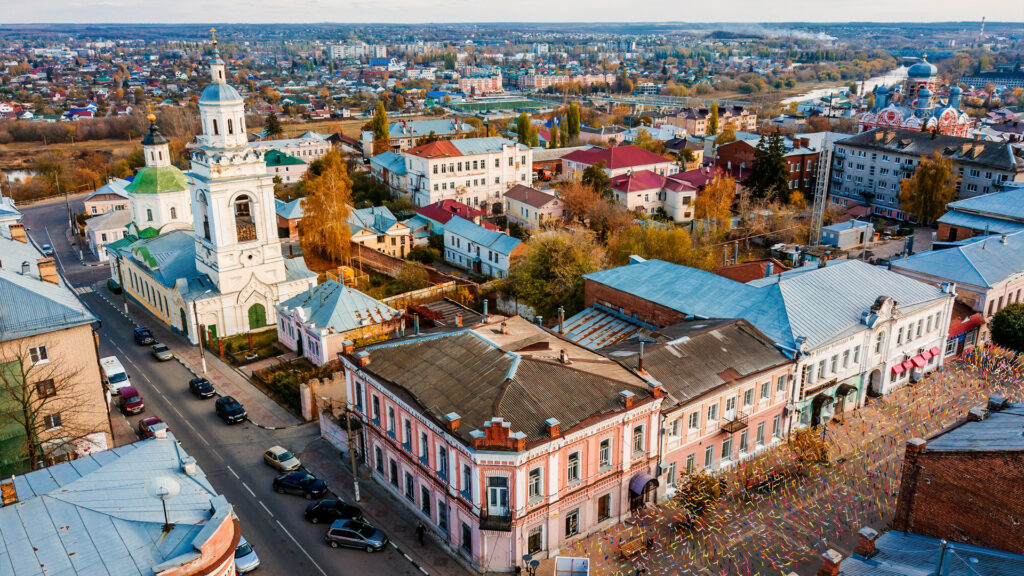Lipetsk: Industrial Center and Cultural Hub in Central Russia

Lipetsk, located in the heart of the Central Federal District of Russia, is a city renowned for its industrial prowess, cultural heritage, and scenic landscapes. As the administrative center of Lipetsk Oblast, the city has played a pivotal role in Russia’s economic development, particularly in the fields of metallurgy, manufacturing, and agriculture. Nestled along the banks of the Voronezh River and surrounded by fertile plains, Lipetsk combines historical charm with modern infrastructure, offering residents and visitors alike a glimpse into its rich history and dynamic present.
Geography and Climate
Lipetsk is situated approximately 400 kilometers southeast of Moscow, on the banks of the Voronezh River. The city’s geographical location in the European part of Russia provides fertile soil for agriculture and scenic landscapes dotted with rivers, lakes, and forests. Lipetsk experiences a temperate continental climate, characterized by cold winters and warm summers, with moderate precipitation throughout the year.
History and Cultural Heritage
Founded in 1703 as a fortress to protect Russia’s southern borders, Lipetsk quickly grew into a trading and agricultural center due to its strategic location on trade routes between Moscow, the Black Sea, and the Caucasus. Throughout its history, Lipetsk has been shaped by periods of prosperity, cultural exchange, and industrial development.
The city’s cultural heritage is reflected in its architectural landmarks, including churches, cathedrals, and historical buildings that showcase a blend of Russian and European architectural styles. The Cathedral of St. Nicholas, with its elegant domes and ornate interiors, stands as a symbol of spiritual devotion and architectural craftsmanship in Lipetsk.
Industrial Hub
Lipetsk is renowned for its industrial prowess, particularly in metallurgy and manufacturing. The Lipetsk Metallurgical Plant (NLMK), one of Russia’s largest steel producers, has been instrumental in shaping the city’s economy and industrial landscape. The plant’s operations include the production of steel, rolled products, and metal goods, contributing significantly to regional economic growth and employment.
In addition to metallurgy, Lipetsk’s industrial base includes machinery manufacturing, chemicals, food processing, and consumer goods production. The city’s strategic location on major transportation routes, including railways and highways, facilitates the transportation of goods to domestic and international markets, supporting trade and commerce.
Cultural Diversity and Community Life
Lipetsk is home to a diverse population, including Russians, Ukrainians, Tatars, and other ethnic groups, reflecting its role as a cultural melting pot in central Russia. The city’s cultural life thrives with theaters, museums, art galleries, and cultural centers that showcase local talent and historical artifacts. Annual events such as the Lipetsk City Day and the International Folk Festival celebrate traditional music, dance, and cuisine, fostering community spirit and cultural exchange.
Landmarks and Attractions
Lipetsk boasts several architectural landmarks and cultural attractions that highlight its historical and artistic significance. The Peter and Paul Cathedral, a neo-Gothic masterpiece with soaring spires and intricate stained glass windows, is a testament to Lipetsk’s architectural heritage and religious devotion. The Lipetsk State Museum of Local Lore houses exhibits on archaeology, ethnography, and regional history, offering insights into Lipetsk’s past and cultural evolution.
The Voronezh River embankment provides a scenic setting for leisure activities, with parks, promenades, and recreational facilities attracting residents and visitors alike. Nearby, the Lipetsk Zoo and Botanical Garden offer educational experiences and conservation efforts, showcasing diverse plant and animal species while promoting environmental awareness.
Education and Innovation
Lipetsk is home to several educational institutions, including Lipetsk State Technical University and branches of leading Russian universities, fostering academic research, innovation, and skills development. These institutions collaborate with local industries to promote technological advancement and entrepreneurship, supporting Lipetsk’s transition to a knowledge-based economy.
Urban Development and Sustainability
In recent years, Lipetsk has undergone urban development projects aimed at improving infrastructure, enhancing quality of life, and promoting environmental sustainability. Efforts to modernize housing, transport, and public amenities have transformed the cityscape, while initiatives focusing on environmental protection, energy efficiency, and waste management aim to create a sustainable and resilient urban environment for future generations.
Challenges and Future Prospects
Lipetsk faces challenges such as urbanization, environmental sustainability, and socio-economic disparities, which require coordinated efforts from government, industry, and civil society to address. Initiatives focusing on sustainable development, social welfare, and community engagement aim to create inclusive growth and improve the well-being of all residents.
Conclusion
Lipetsk, with its industrial heritage, cultural diversity, and natural beauty, stands as a dynamic city in central Russia. From its origins as a frontier fortress to its role as a center of industry, culture, and community life, Lipetsk continues to evolve while preserving its traditions and embracing modernity. As it navigates the challenges and opportunities of the 21st century, Lipetsk remains a symbol of resilience, creativity, and progress in Russia’s diverse and dynamic urban landscape.




